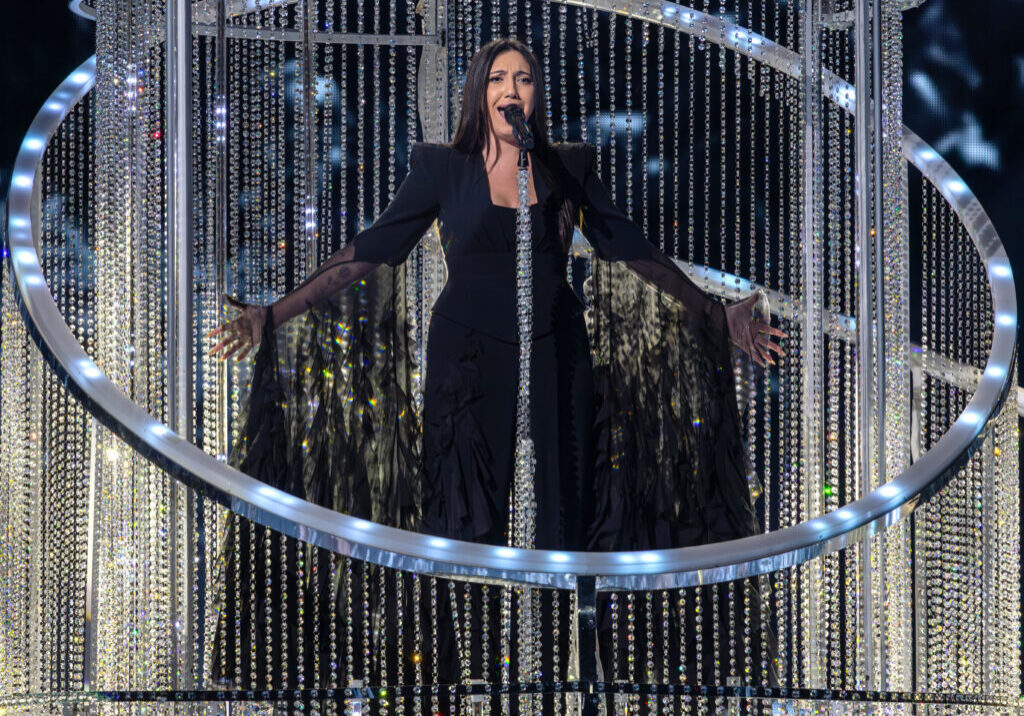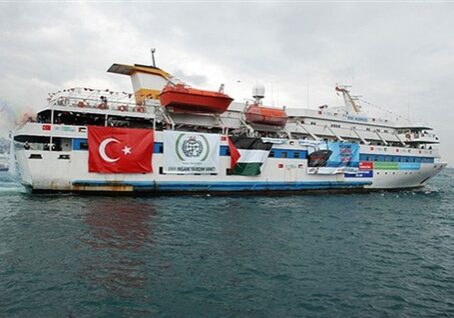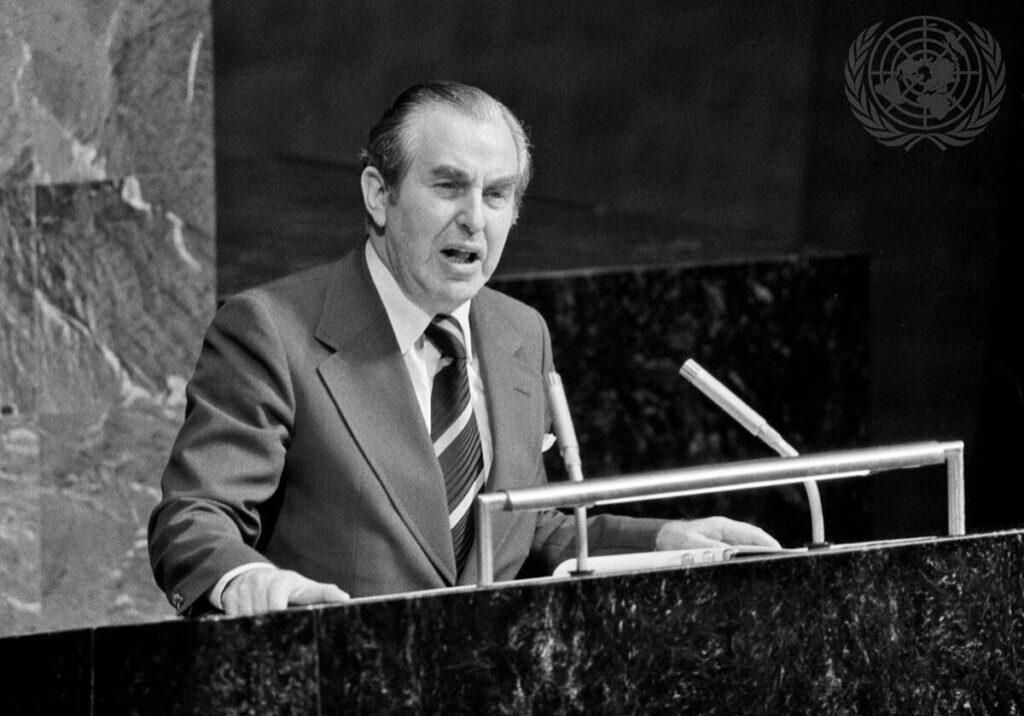Australia/Israel Review
Hiding from the Truth
Sep 25, 2009 | Jonathan D. Halevi
The Goldstone Commission and the Gaza War
By Jonathan D. Halevi
On September 15, 2009, the UN investigating commission known as the Goldstone Commission published its conclusions regarding Israel’s Gaza operation (Dec. 27, 2008-Jan. 18, 2009), accusing Israel of violating both international humanitarian law and the Geneva Conventions, and committing war crimes.
In response, the Israeli Foreign Ministry issued an official statement accusing the commission of bias and one-sidedness, and of ignoring the thousands of Hamas rocket attacks on Israeli civilians which, Israel claimed, made the military operation an absolute necessity.
Was the UN commission’s approach one-sided against Israel, or unbiased and objective as commission chairman Richard Goldstone contended?
The commission never asked about Palestinian war crimes
Statements of Palestinians recorded by the commission and posted on the UN website provide reliable evidence of the commission’s methodology and raise serious questions about its intention to discover the truth. Commission members did not ask the interviewed Palestinians questions about the activities of Hamas and the other Palestinian terrorist organisations operating in the Gaza Strip which could be classified as war crimes or that were potentially dangerous to innocent Palestinians. They never asked about:
1. Launching rockets at Israeli towns and villages from within residential dwellings;
2. Firing mortar shells into Palestinian neighbourhoods when IDF soldiers were operating in or near the area;
3. Firing anti-tank missiles, rifles and machine guns at Palestinian buildings in Gaza suspected of having been entered by the IDF despite the presence of Palestinian civilians in the area;
4. Seizing private homes from which to ambush IDF units;
5. Booby-trapping houses before and during the war and detonating the bombs;
6. Planting various types of anti-personnel and improvised anti-vehicular bombs near houses and detonating them;
7. Sniping and firing heavy machine guns at Israeli soldiers within residential areas.
None of the statements taken by the commission reported even a single instance of the presence of armed Palestinians, or of Palestinians firing rockets at Israel or shooting at IDF soldiers operating in the Gaza Strip.
There was no serious consideration of Palestinian “friendly fire” incidents, which occur with the most disciplined armies. We can only guess how many Palestinian civilians were killed or wounded by Palestinian fire. In fact, the statements reported that throughout the entire three weeks of fighting there was no significant Palestinian resistance.
The commission did not press the witnesses in order to elicit more information and did not confront them with the reports issued by the terrorist organisations themselves, which detailed the fighting in a way that often contradicted the Palestinian witnesses. It did not adequately examine Palestinian rules of engagement – or the lack of any such rules. In addition, the witnesses hid vital information from the commission regarding the presence of armed terrorists or exchanges of fire in their vicinity, casting doubt on their reliability.
On June 28 and 29, 2009, the Goldstone Commission recorded Palestinian statements at the UNRWA headquarters in Gaza City, and posted the questions and answers on the commission’s website. The following is an analysis of the four main statements, the way the commission interpreted them, and reports from other Palestinian sources which contradict the testimony presented to the commission.
Statements from the Silawi family
Three members of the Silawi family were interviewed by the commission: Moussa al-Silawi (91, blind), Sabah al-Silawi (Moussa’s wife) and Mouteeh al-Silawi, a Hamas official.
The most detailed statement was that of Mouteeh al-Silawi, deputy director of the Hamas administration’s Muslim Religious Endowments Ministry for the northern Gaza Strip, who said he was giving a sermon when the mosque was attacked on Jan. 3.
He claimed that there was no military activity in the Ibrahim al-Maqadma Mosque or around it during the attack. Worshipers came to the mosque seeking a safe haven on the assumption that it was a secure place. The evening and night prayers were said one after another to prevent unnecessary movement of worshipers outside the mosque. Israel committed a war crime in violation of international law by attacking civilians in a mosque, the witness said.
The commission members did not ask about armed men in the mosque, whether it was used for military purposes or incited worshipers to carry out terrorist attacks against Israel. They did not ask if there were weapons in the mosque, if armed men were operating near the mosque, whether Hamas and its military wing, the Izz a-Din al-Qassam Brigades, controlled the mosque and used it to recruit operatives, or the identity of the casualties and their organisational affiliation (including members of the Silawi family).
An examination of freely accessible Palestinian sources shows that the casualties in this incident were terrorists and included members of the Silawi family, who were represented to the commission as innocent civilians. Among them: Ibrahim Moussa Issa al-Silawi; Omar Abd al-Hafez; Moussa al-Silawi; Sayid Salah Sayid Batah; Ahmed Hamad Hassan Abu Ita; Muhamad Ibrahim al-Tanani; Rajah Nahad Rajah Ziyyada; and Ahmed Assad Diyab Tabil.
Statement of Muhammad Fuoad Abu Askar
Muhammad Fuoad Abu Askar represented himself to the commission as the director-general of Hamas’ Ministry of Muslim Religious Endowments. He said he had been detained in Israel in 1992 for belonging to Hamas.
He told the commission that his house was “unjustly” blown up by the IDF. He said he had received a telephone call warning him to evacuate the house from someone who identified himself as an IDF representative and that 20 minutes later his house was struck from the air.
Askar said a short time later the area around the Fakhura school was also bombed. The school served as a shelter for many Palestinians from Beit Lahiya, a-Salatin and al-Atatra, who regarded it as a safe haven because it was located in the middle of the refugee camp and it was flying the UNRWA flag. He said he saw three bombs hit the school region and he heard more. Two hit the house of the Diyab family, killing 11 people. Dozens of people were killed near the school and most of the casualties were children, Abu Askar said. There were no armed men in the area, as opposed to Israeli claims, he said. Two of his children, Khaled and Imad, were killed, as was his brother Raafat, all of them, according to Askar, innocent civilians.
Although Muhammad Fuoad Abu Askar admitted being a Hamas operative and having been detained by Israel, the commission did not think to ask whether he was connected with Hamas’ military wing, the Izz a-Din al-Qassam Brigades. They did not ask him whether those killed near the school belonged to any organisation or were military-terrorist operatives.
An examination of freely accessible Palestinian sources shows that contrary to his claims, he and his sons were directly and closely linked to Izz a-Din al-Qassam, a connection that included providing terrorists with weapons and ammunition, and that there were a number of terrorists in the Fakhura school area, including Muhammad Fuoad Abu Askar himself and Khaled Muhammed Fuoad Abu Askar, Muhammad’s son. Another son, Ahmed, was killed on July 7, 2006, when he tried to launch an anti-tank missile at an IDF unit, and yet another son, Osama, was critically wounded fighting the IDF on October 13, 2004.
Others terrorist operatives killed in the same Fakhura school incident included: Bilal Hamzah Obeid, an Izz a-Din al-Qassam operative; Raafat Abu Askar, a military-terrorist operative in the security services with the rank of warrant officer; Osama Jemal Obeid, an Izz a-Din al-Qassam operative; Iyad Jaber Aman, an Izz a-Din al-Qassam operative; Abd Muhammad Abd Qudas, a Fatah operative active in Palestinian Military Intelligence; and Atia Hassan al-Madhoun and his son, Ziyad al-Madhoun, operatives in the military-terrorist wing of the Democratic Front for the Liberation of Palestine.
Statements of Wail and Salah al-Samouni
Wail and Salah al-Samouni described the shelling of Wail’s house, where the extended Samouni family had sought shelter and where more than 20 people were killed.
They told the commission: At about 5:30 am on Jan. 5, Wail left the house with other men to bring wood for a fire. As soon as they left the house a helicopter fired a missile at them and then a number of missiles at the house. After the house was hit the wounded proceeded toward Salah a-Din Street and were refused medical attention by IDF soldiers. Salah claimed that the soldiers fired shots over their heads to frighten them and make them leave more quickly. They said there was no activity of armed Palestinians around the house. Salah al-Samouni said that “everyone is a farmer, I swear to Allah that everyone is a farmer,” and rejected the possibility that they were armed or wanted.
The commission did not ask about the identity of the dead Palestinians and about the possibility that some of them were terrorists. It did not challenge their claim that there were no armed Palestinians in the area, despite reports by both Palestinian terrorist organisations and the IDF about exchanges of fire in the area.
In addition, the commission did not press the witness about his claim that the soldiers did not provide medical attention, in contradiction of a statement given by a female member of the family who told the NGO B’Tselem that the soldiers had given them medical aid.
Members of the family repeatedly claimed that all the people in the house were ordinary civilians. However, at least three were affiliated with Islamic Jihad. Meisa al-Samouni did not tell B’Tselem that her husband, Tawfiq Rashad Hilmi al-Samouni, who was killed on Jan. 5, was an Islamic Jihad terrorist. She and the other members of the extended family, including Wail and Salah (who gave statements to the Goldstone Commission), never mentioned or hinted that other family members in the house at the time were Islamic Jihad operatives, among them Muhammad Ibrahim Hilmi al-Samouni and Walid Rahad Hilmi al-Samouni. An Islamic Jihad flyer noted that Muhammad and Walid al-Samouni were active in fighting against the IDF in the Zeitun neighbourhood.
An Islamic Jihad poster commemorating Muhammad Ibrahim al-Samouni is captioned: “He [Muhammad], along with the mujaheed Walid Rashad al-Samouni, blew up the tank, causing the deaths of a number of Zionists, as admitted by the enemy, on the first night of the ground invasion during the war south of the Zeitun neighborhood.”
Statement of Khaled Muhammad Abd Rabbo
Khaled Abd Rabbo reported on the deaths of two of his children on Jan. 7, 2009. Khaled lives in Jabalya, in a four-storey house. He and his family did not leave it even when the ground fighting began, he said. He claimed he saw no activity of armed Palestinians in the area.
He said that on Jan. 7 an IDF unit entered the area around his house and positioned tanks nearby. The soldiers used a megaphone to call the residents out of the house. They came out holding a white flag, and one of the soldiers got out of a tank and shot at his children for no reason. He said two of his daughters were killed, another was seriously wounded, and his wife was also wounded.
No questions were asked by the members of the commission, not about the events, or whether there was fighting in the area, or whether there were armed Palestinians.
Contrary to the claims made by Khaled Abd Rabbo, Palestinian sources reported on armed Palestinian activity in the area near the incident and on exchanges of fire between Palestinians and the IDF.
At the time Khaled claimed his daughters were shot by IDF soldiers, four other Palestinians were killed nearby: Ibrahim Abd al-Rahim Suleiman, 19, an Izz a-Din al-Qassam operative; Shadi Issam Hamad, 33, a Popular Front for the Liberation of Palestine operative; Muhammad Ali al-Sultan, 55, an Izz a-Din al-Qassam operative; and Ahmad Adib Faraj Juneid, 26, another Izz a-Din al-Qassam operative.
An Izz a-Din al-Qassam report reveals information about the exchange of fire between the IDF and armed Palestinians in the area where Khaled Abu Rabbo’s daughters were killed, and its closeness in time to the events he reported. His version and the Izz a-Din al-Qassam website provided similar descriptions of the advance of IDF armoured vehicles into the area at the same time.
However, Abu Rabbo did not tell the UN commission about the exchanges of fire between IDF and the Izz a-Din al-Qassam Brigades. The possibility cannot be ruled out that his children were caught in the crossfire and may have been killed by Palestinians.
As we can see from a detailed analysis of freely accessible Palestinian sources (in Arabic), competing explanations exist that counter the claims of the Palestinians who testified before the Goldstone Commission. At the same time, questioning by the members of the commission proved to be superficial and was ill-suited to elicit the truth about events in Gaza.
Col. (res.) Jonathan D. Halevi is the research director for the Orient Research Group and a research fellow of the Jerusalem Centre for Public Affairs. Halevi previously served as a senior adviser for political planning in the Foreign Ministry and as head of the data and information branch in the IDF Spokesperson’s Unit. © Jerusalem Centre for Public Affairs, reprinted by permission, all rights reserved.
Tags: Israel






